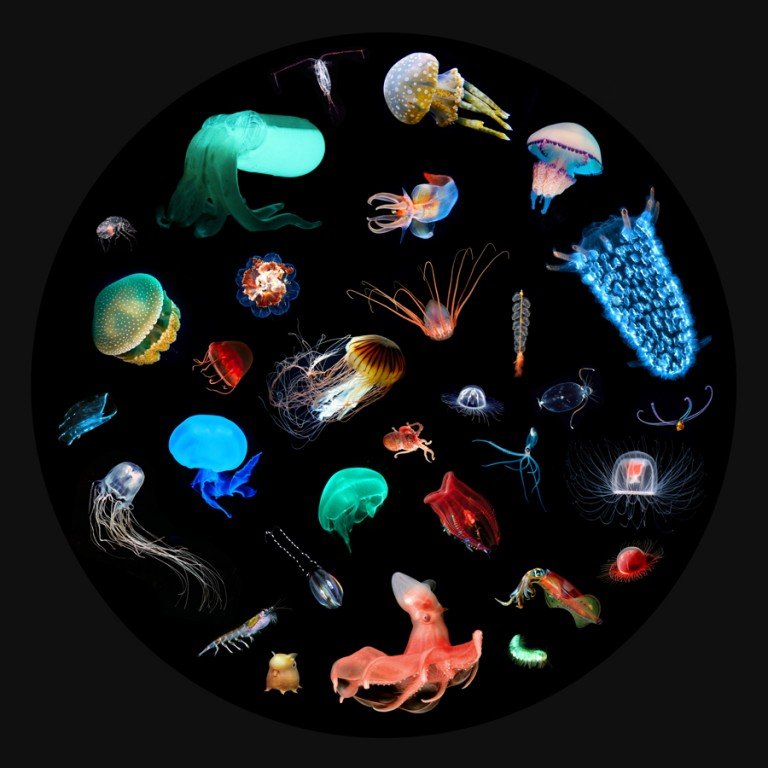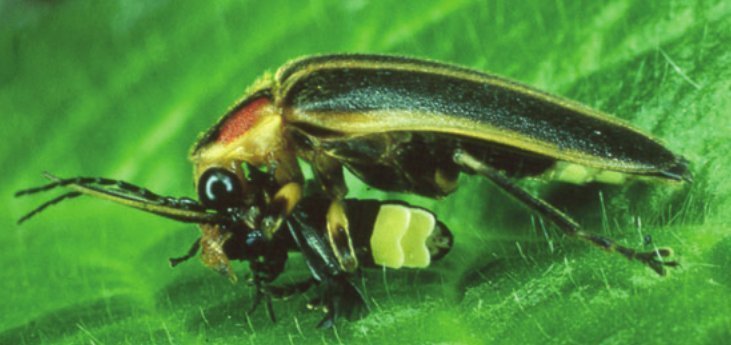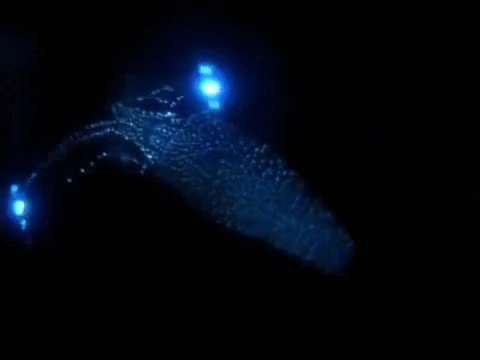Hello everyone ! Welcome to the brand new episode of Imagicnation ! A place where we will find out the answers to some of the most interesting & curious questions related to science...

Hey guys, how is everything going ?? First of all, sorry for the late post…the last week was extremely hectic for me…from travelling back to my home and being injured on an old local bus, to some sleepless nights…everything was pushing me to the dark…initially I could not understand what was happening…but as the ancestors said, “All that happens actually happens for good”. In all those sleepless nights, watching at the fireflies, outside my little window, inspired me to write about nature’s greatest light displays…aka BIOLUMINESCENCE !! So, here we go:

For centuries long, humans have been applying chemistry to create explosive dazzling light shows. But our celebrations aren’t Earth’s only stunning light displays…nature’s got light-shows of its own…!
Nearly all life forms on our planet is eventually powered by light. But some of our planet’s special species have found out how to make light for themselves. Our planet Earth is full of organisms with the capability to bioluminescence. Not every creature that glows is bio-luminescent. Creatures like the jellyfish are simply fluorescent. They glow only after absorbing and emitting other light.

But, bioluminescent organisms carry their own light machines. Inside the bodies of those species, some special chemicals called luciferins along with oxygen and some ATP, react together with the help of an enzyme called luciferase to emit light.

And you can easily see this chemistry in action just before sunset on a hot summer night.
How many of us have seen the Fireflies?? Everyone?? Actually, they aren’t really flies at all, they’re only beetles. Their nocturnal dances are strikingly beautiful, but did you that the light show is really one big mating show. It’s usually the male fireflies that do the aerial dance performance, while females simply sit and enjoy the show.

So, Fireflies’ use bioluminescence only as a form of sexual selection. It is similar to a peacock’s feathers or an elk’s antlers brighter and more powerful light signals you’re a healthy mate with good genes. Obviously, like any dance performance, you have to get the timing right too and each species of organisms has their own rhythm. Males of the species Photinus pyralis always flash light while flying up. If she sees the male’s signal, after two seconds the female blinks back. Then the male descends down and then blinks again homing in on the female’s response and hoping there’s a mating chance waiting for him when he gets there.
But the line between love and death is a like a thin thread one. Females of the genus Photuris have been recognized by the name “femme fatale” fireflies.

It is because they imitate the flash timing of other species’ females, attracting in unsuspicious suitors and finally eating them up. They harvest some chemical substances from the males’ bodies to keep away their main predator, Spiders. From fungi to little worms, this ability to generate chemical light has evolved independently several times, but to really appreciate nature’s light show, we have to take a plunge. Oceans contain about 80% of the inhabitable space on our planet, and most of Earth’s bioluminescence happens down there. It’s really hard to believe but scientists estimate that 3/4th of all species in the ocean produce their own light and at every depth. The thing is only they don’t just use it to find mates.

The organisms in the photograph above are dinoflagellates, tiny aquatic plankton found all over Earth’s oceans. I’m pretty sure that you can’t see them in this photo. But if they’re disturbed at night, they look bright blue as they light themselves up! Something like this:

Unlike fireflies, they make a different Luciferin molecule, one that emits blue light. This blue light can be seen in ocean waves and in the wakes of ships. But why do you think would a creature too small to swim from a predator, want to publicize its location? Well, have you ever heard the saying, “The enemy of my enemy is my friend”? If a Shrimp or other predator disturbs the dinoflagellates, the blue light can attract the attention of predators that eat Shrimp. Tricky, isn’t it?? Actually, it’s more or less like a chemical burglar alarm. Ocean species use bioluminescence in a variety of ways! Some prey species like this Shrimp, discharge luminous clouds escaping behind a shiny smoke screen.

Some Squid even sacrifice complete limbs so the rest of them can escape away like light-up lizard tails.

Bioluminescence is even used for camouflage, matching the color and brightness of sunlight to cover a silhouette from below. And yeah, obviously, predators have mastered the light game too. Some use it as a bait, while some flash to daze their prey. Some like this deep-sea dragon fish even use bioluminescent patches as torchlights in the dark.
So, all I want to say is…

What’s incredible is that even in habitats where the sunlight almost never reaches, light has become a crucial part of life. And yeah, whether you’re at the bottommost of the ocean or your garden, you can appreciate some of nature’s brightest ideas...!
That’s all for today guys…
Hope you enjoyed the light show…
If you did, please feel free to express your thoughts in the comment section below…
References used:

1) Source 1
2) Source 2
3) Source 3
1) Imagicnation #02 | What Would Happen if You Were Shrunk?
2) Imagicnation #01 | How much plastic is in the ocean ??
3) Life #01 | The Most Important Moment in the History of Life on Earth ! !
